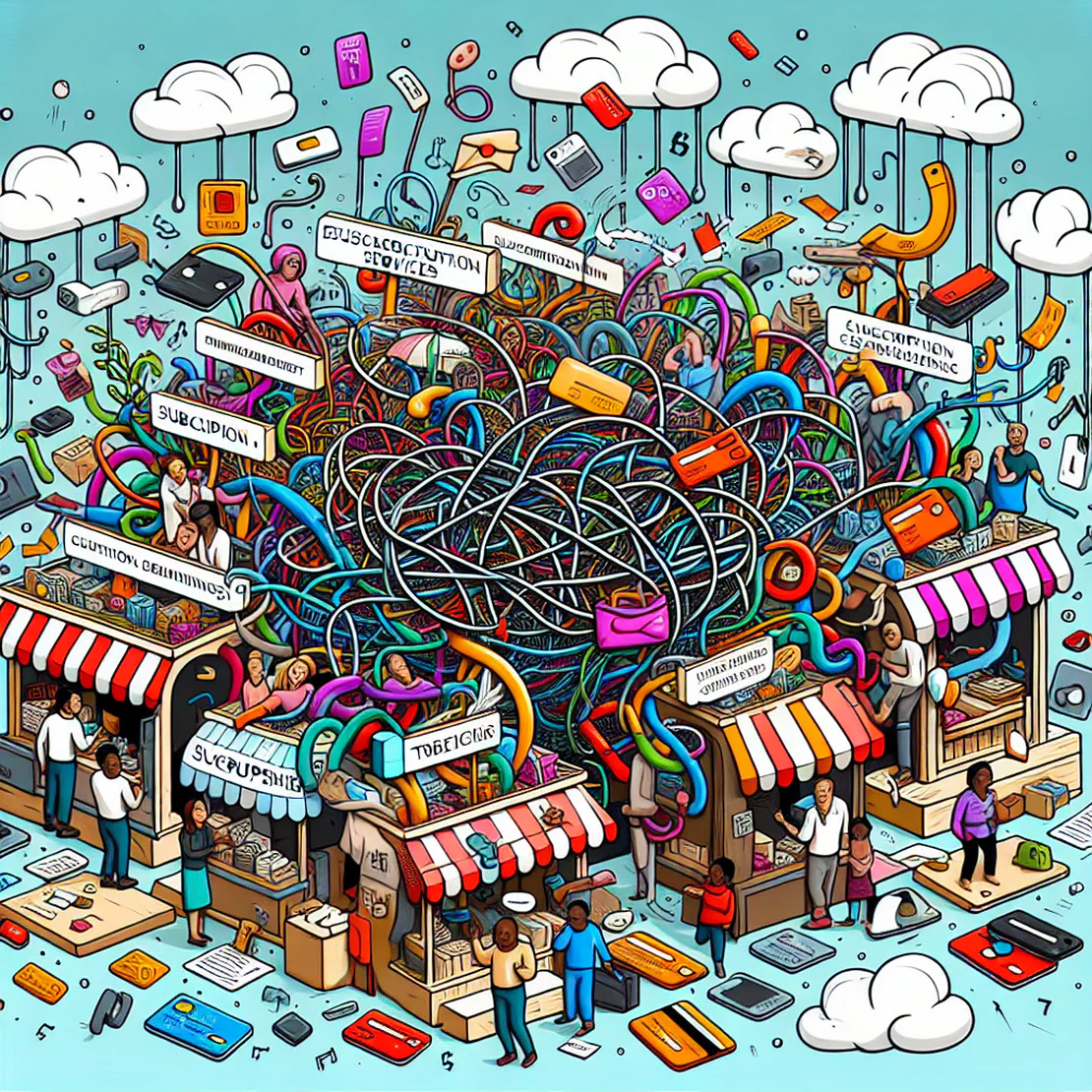
The Subscription Trap
- Planet Money
- Subscription , Netflix , Wallet
- October 18, 2024
Table of Contents
At a Glance
-
Subscription Model Irony - ‘Like, we can’t have a subscription cancellation service that charges people a subscription for it.’ This highlights the ironic situation the company faced in considering a subscription model for a service designed to manage subscriptions.
-
Desperation Leads to Innovation - ‘But when you’re on death’s doorstep, basically you’re willing to kind of do whatever.’ This quote captures the desperate situation that can drive a company to adopt strategies they previously opposed.
-
Success of Subscription Model - ‘It was $3 a month too, like we weren’t charging a lot or anything, but when we saw that, we’re like, okay, we actually have a revenue model now.’ This emphasizes how a simple pricing strategy led to a breakthrough in finding a viable business model.
-
Huge Financial Turnaround - ‘It was 1.3 billion. With a B.’ The sale of the company for a billion dollars highlights the massive success and ultimate validation of their business model.
-
Consumer Subscription Fatigue - ‘And yes, it brought untold convenience to consumers and consistent revenue to businesses, but it’s also meant that we’ve been juggling with more subscriptions than we can keep track of.’ This point underscores the widespread issue of subscription overload among consumers.
-
Humorous Tech Solution - ‘And like, he starts like writing this algorithm and a little while later, boom, like a list pops out.’ This reflects a light-hearted moment where a complex problem is solved in what seems like a simple and almost magical way through technology.
-
Discovery of Wasted Expenses - ‘And there’s a $40 subscription for a security system on a home that I had moved out of like over a year prior.’ This reveals the common issue of forgotten subscriptions draining money without the consumer’s active use or even awareness.
-
FTC Steps In - ‘Subscription traps are a market failure.’ This statement by an FTC official highlights the government’s recognition of and response to deceptive subscription practices, marking a serious attempt to regulate and protect consumers.
-
Frustration with Subscription Cancellations - ‘It was hellish. She had to convince them that this is what she wanted to do.’ This quote reflects the widespread frustration with the difficulty of cancelling subscriptions, a pain point for many consumers.
-
Aspirational Subscriptions - ‘When we sign up for a gym membership after New Year’s, it’s this kind of bet on ourselves that maybe this will be the year that we’ll finally become the healthy, ripped person we’ve dreamed of.’ This highlights the psychological aspect behind many subscription purchases, where aspiration plays a key role.
What to Do
-
‘Focus on aligning incentives with customer interests’ - To ensure businesses maintain a low churn rate and encourage long-term customer loyalty by improving services or keeping prices low.
-
‘Implement straightforward cancellation processes’ - So that companies prevent exploiting customer inertia and make it equally easy to cancel as it is to sign up, fostering a fair consumer experience.
-
‘Monitor and regularly audit your subscriptions’ - To avoid paying for services you no longer use or need, thereby saving money and keeping only those subscriptions that genuinely add value to your life.
-
‘Understand the psychological motivations behind subscriptions’ - Recognizing the aspirational reasons behind purchases can help in making more informed decisions about which services truly benefit your lifestyle and goals.
-
‘Utilize tools to manage your subscriptions effectively’ - Engaging apps and services that assist in tracking and managing subscriptions can prevent unnecessary expenses and provide a clearer financial overview.
What to Get
-
Subscription Services - Generally used for convenience and continuous service, often lead to unintentional continued payments due to difficulty in cancellation processes.
-
Gym Membership - Signed up for with aspirations of becoming healthier, often around New Year’s as a resolution.
-
Magazine Subscription - Unintentionally paid for, forgotten, serves as an example of subscriptions that are easy to sign up for but difficult to cancel.
-
Apps for subscription management and cancellation - Mentioned in the context of helping to manage and cancel other subscriptions, though ironically they themselves are subscriptions.
Summary
In a recent podcast episode titled “The Subscription Trap,” hosts from NPR’s Planet Money dive into the growing trend of subscription-based business models and its implications for consumers and businesses alike. The episode begins by exploring how subscriptions have shifted from being a novel way to purchase products and services to a prevalent industry standard. Companies from diverse sectors, including entertainment, security systems, and everyday consumer goods, are increasingly adopting this model due to the steady revenue streams it provides.
The hosts discuss the concept of “churn rate,” a critical metric for subscription businesses that represents the percentage of customers who cancel their subscriptions each month. The conversation highlights how companies strive to keep this rate low through various strategies, some of which may not always align with consumer interests. For instance, companies might make it difficult for customers to cancel subscriptions or obscure the full price of services after introductory offers.
An interesting case shared during the episode is that of Haroon Mukhtarzada, who, along with his brothers, discovered several forgotten subscriptions through an algorithm designed to detect recurring transactions. This personal experience led them to create an app aimed at helping others identify and manage their subscriptions. Despite initial struggles, including a failed affiliate marketing strategy and significant financial challenges, the Mukhtarzada brothers eventually embraced the subscription model for their own service. This ironic twist turned their fortunes around, leading to substantial growth and the eventual sale of their app, Truebill, for $1.3 billion.
The episode does not shy away from discussing the darker aspects of the subscription economy. It mentions how some business practices exploit consumer inertia, where people continue paying for services they no longer use or need, simply because they forget to cancel. The narrative is enriched with insights from a Stanford economist who studied patterns in subscription cancellations, revealing that forced decision points (like expiring credit cards) significantly increase cancellation rates.
In conclusion, while the subscription model offers convenience and benefits for both consumers and businesses, it also raises concerns about transparency and consumer protection. The episode calls for greater scrutiny and regulation to prevent exploitative practices in the subscription economy, ensuring that the model remains fair and beneficial for all parties involved.


